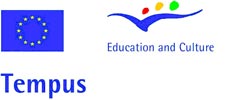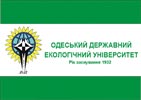L.N. Gutman
L.N. Gutman was born in Moscow in 1923. In 1931 he went to and in 1941 finished the secondary school № 620 in Moscow. The same year he became a first-year student of the faculty of Mechanics and Mathematics of Moscow State University (MGU) and was evacuated together with the University to Ashkhabad. In 1942 Gutman passed the first-year exams at MGU and applied for transfer to the second year of study at the Meteorological Faculty of the Hydrometeorological Institute which at that time was also temporarily located in Ashkhabad.
In 1944, being a fourth-year student, Gutman was sent to take a term of practical training to the Central Institute of Prognoses, where he remained for regular work at the Department of Dynamic Meteorology. It is at that period that the fruitful scientific activity of L.N. Gutman began. L.N. Gutman's coming-to-be as a scientist was to a great extent influenced by his scientific advisor, the Corresponding Member of the Academy of Academy of Sciences of USSR, I.A. Kibel. On the initiative of I.A. Kibel the beginner researcher addressed the problems of yet poorly developed section of Meteorology - Mesometeorology. Thus the frame of aspects of Mesometeorology, which L.N. Gutman worked on, steadily broadened.
The first works by L.N. Gutman addressed the nonlinear theory of local winds. For first time ever these works made it possible to account for certain features of meteorological processes in breezes and mountain-valley winds. Thus the very first of his researches resulted in interesting original results and showed surprising ability of Leo Gutman to find the analytical solutions to intricate nonlinear problems and L.N. Gutman could be considered one of the founders of theory for these phenomena.
The works by L.N. Gutman on distribution of temperature in the surface air, in the snow and soil allowed devising an operative method for computation of temperature in soil by air temperature data, which was an important practical problem.
The following cycle of L.N.Gutman's works was devoted to research into the mechanism of resolution of the atmosphere's vertical instability. He achieved striking results related to the theory of cumuli cloudiness and the theory of tornadoes. These researches provided a basis for his defending a doctoral thesis in Physics and Mathematics in 1956.
From 1959 till 1963 L.N.Gutman worked in Nalchik, first as a Senior Reseacher at the Elbrus expedition of the Institute of Applied Geophysics of the Academy of Sciences of the USSR, then, following the reorganization of the expedition into High-Mountain Geophysical Institute of the Academy of Sciences of the USSR, he took up the post as the Head of the Laboratory of Mountain Meteorology. Within the period upon the defence of the doctoral thesis, L.N.Gutman conducted a series of researches into the nonlinear theory of spatial relief flowlines, katabatic winds in Antarctica and the theory of some large-scale meteorological processes (fronts, tropical cyclones).
It is also here that he worked as a part-time professor of the Department of Theoretical and Experimental Physics at Kabardino-Balkar State University where since 1962 L.N. Gutman held professorship.
In 1963 L.N.Gutman was invited to work at the Department of Dynamic Meteorology of the Computing Center of the Siberian Branch of the Academy of Sciences of the USSR. In a brief space of time he succeeded to establish a creative, active and efficient collective of young scientists some of whom arrived together with L.N.Gutman from Nalchik. Thus a full degree of the organizational and professional qualities of L.N.Gutman as an attentive teacher and a tutor of the scientific youth were drawn forth. In the laboratory headed by Leo Gutman considerable results on the basic issues of Mesometeorology, which underlaid the publishing of 1969 ‘Introduction to the Nonlinear Theory of Mesometeorological Processes' monograph, being a reference book for many specialists in Dynamic Meteorology, were successfully achieved.
In the early 1970s L.N. Gutman, together with the followers, began to develop the theory of iterrelated diurnal fluctuations, with K-theory of turbulence and equations of turbulent kinetic energy balance applied, and develops the theory of Mesometeorological boundary layer above thermally and orographically by a heterogeneous underlying surface, this time with the predominant use numerical simulation method. Thus in this period Leo Gutman made considerable contribution to finding solutions to the aspects of local weather forecasting and parametrisation of mesoscale phenomena for short-term weather forecasting.
The Conference is sponsored by
 |
 |
 |
 |
| EU Programme COST 728 | EU TEMPUS JEP 26005 | Odessa Regional State Administration | Odessa State Environmental University |





